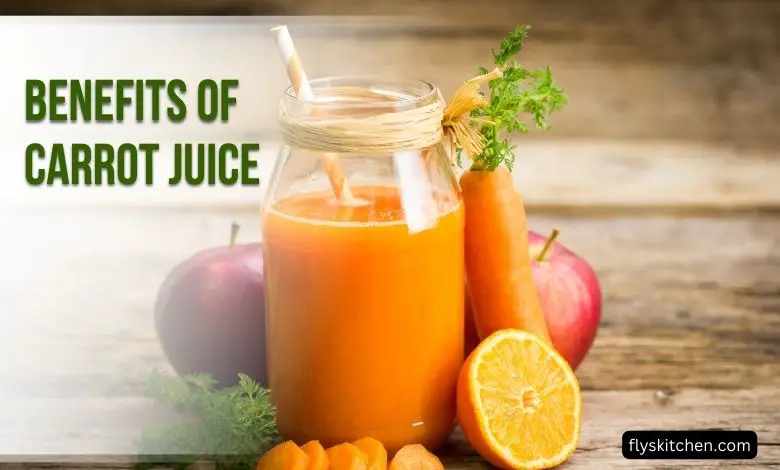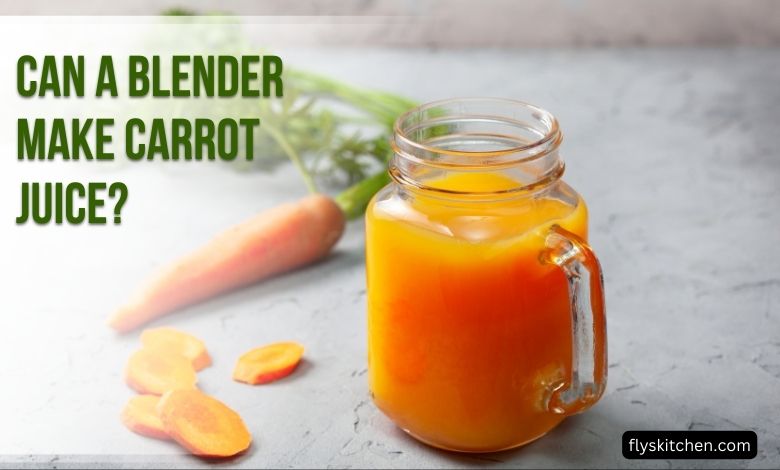For health-conscious individuals looking to incorporate more fresh vegetables and fruits into their diets, carrot juice can be a nutritious and delicious option. Carrots are packed with vitamins, minerals, and antioxidants that provide many health benefits. However, the equipment needed to extract all that nutritious juice from carrots can require a significant investment. Many juicers specifically designed for hard produce like carrots can cost over $100. For those looking for a more budget-friendly option, using a standard blender to make carrot juice may seem appealing. But can a regular blender really extract enough liquid from hard carrots to make carrot juice?
Contents
The Benefits of Carrot Juice

Before examining whether a blender can make carrot juice, it helps to understand why one would want to make carrot juice in the first place. Here are some of the top benefits that fresh carrot juice can provide:
- Boosted immunity – Carrots contain high levels of vitamin C and antioxidants that support the immune system. Just one cup of carrot juice provides over 3 times the recommended daily intake of immune-boosting vitamin C.
- Improved vision – Carrots get their orange color from beta carotene, which the body converts into vitamin A. Vitamin A supports eye health and vision.
- Detoxification – Carrot juice provides nutrients that help the liver purge toxins and waste from the body more efficiently. The fiber in carrots can also help cleanse the colon.
- Lowered blood pressure – The potassium in carrots helps relax blood vessel walls, supporting healthy blood pressure. Carrot juice also provides antioxidants that protect against oxidative damage to blood vessels.
- Cancer prevention – The antioxidants in carrots, including beta carotene and luteolin, have been linked to reduced risk of some cancers like prostate, colon, and stomach cancer.
- Heart health – The fiber and potassium in carrot juice support cardiovascular health. The antioxidants also help prevent oxidative damage and inflammation that can lead to heart disease.
The Challenge of Juicing Carrots
Getting all those benefits found in carrots into liquid form requires separating the water-soluble nutrients from the insoluble fiber. This is why juice extracts far more nutrients from produce than simply blending it. The insoluble fiber remains intact when blending, obstructing the absorption of beneficial phytonutrients.
Carrots present a particular challenge when juicing because they contain very sturdy cell walls. Without a powerful juicing mechanism, the solid carrot fiber prevents an efficient release of the juice. This is why carrot juicers utilize gears or motors that crush and “chew” through the carrot’s solid composition while straining out the fiber.
Can a Blender Extract Carrot Juice?
Standard household blenders do not contain the same juicing mechanisms and power as a dedicated juicer. However, some people have experienced success making small amounts of carrot juice in a blender. Here are some factors that determine whether a blender can produce carrot juice:
- Blender Power – Higher wattage blenders have a better chance of breaking down carrot fiber to release juices. Look for blenders of 700 watts or higher.
- Blender Speed – Blenders that reach speeds of 20,000 rpm or more can better pulverize hard vegetables like carrots. Lower speeds may leave too much fiber intact.
- Blender Quality – Sturdy blenders with sharp, durable blades can handle carrots more efficiently than cheaper models with duller blades.
- Carrot Preparation – Peeling and chopping carrots enables easier juicing than throwing in whole carrots. Grating carrots can also help release more juice.
- Added Liquid – Adding small amounts of water or other juice while blending can help achieve a more liquid consistency.
- Batch Size – Blenders will extract more juice from carrots when making no more than one or two servings at a time. Large batches may be too fibrous.
- Straining – Pouring the blended carrot mixture through a fine mesh strainer or cheesecloth removes excess fiber, resulting in a smoother juice.
While getting a perfectly smooth and fiber-free carrot juice from a blender is difficult, it can produce drinkable juice in small quantities. However, for larger amounts, a quality juicer is still the better investment for carrot juice.
Tips for Making Carrot Juice in a Blender
Here are some tips to follow when attempting to make carrot juice in a blender:
- Use a high-power blender, ideally 700+ watts.
- Blend no more than 2 cups of chopped carrots at one time.
- Peel carrots and chop them into small pieces for easier juicing.
- Add a few tablespoons of water or mild juice like apple juice.
- Blend on high speed for at least 1 minute to break down fiber.
- Pour blended juice through a mesh strainer or cheesecloth.
- Press down on solids to squeeze out extra juice.
- Add more water/juice for a smoother consistency.
- Drink immediately for the best flavor and nutritional value.
- Combine with sweeter juice if the taste is too earthy.
The consensus among juicing experts is that high-speed blenders may release some liquid from carrots, but not nearly as efficiently or completely as masticating or centrifugal juicers. However, for those who only need a small amount of carrot juice infrequently, a powerful blender can certainly work in a pinch. Just don’t expect the same yield or quality as with a true juicer. Consider blending as a temporary solution until investing in a good juicer is feasible.
FAQ About Making Carrot Juice in a Blender
Here are answers to some frequently asked questions about using a blender to make carrot juice:
Can I use a personal-sized blender to make carrot juice?
No, the smaller motors and blades on personal-sized blenders like NutriBullet are not strong enough to break down carrot fiber and extract the juice efficiently. You’ll need a full-sized blender with 700+ watts for carrot juicing.
What’s the maximum amount of carrot juice I can make in a blender?
It’s best to limit batches to no more than 2 cups of chopped carrots. Larger amounts won’t properly pulverize in a blender. For bigger batches, use a juicer.
Should I peel the carrots before juicing them in a blender?
Yes, peeling helps remove the outer layer of fiber that’s toughest to break down with a blender. Chopping also creates more surface area for the blender blades to act on.
Can I add other fruits and veggies to make a blended carrot juice blend?
Absolutely. Softer fruits like apples or berries can combine well in a carrot juice blend. Just be mindful of the maximum batch sizes for blender juicing.
Will blended carrot juice keep as well as juiced carrot juice?
No, the fiber left in blended carrot juice decreases its shelf life compared to juiced versions. Drink blended carrot juice within 12-24 hours for best quality.
The Bottom Line
While juicers are specially designed to extract maximum liquid and nutrients from produce like carrots, some blenders can make small amounts of passable carrot juice. Blenders lack the same efficiency and yield of real juicers when it comes to making carrot juice. However, using a powerful, high-speed blender is doable in a pinch. Just don’t expect perfectly smooth, pulp-free juice. For frequent or larger batches of carrot juice, investing in a quality masticating or centrifugal juicer is strongly recommended. But for the occasional single serving of carrot juice, a trusty blender may suffice.

